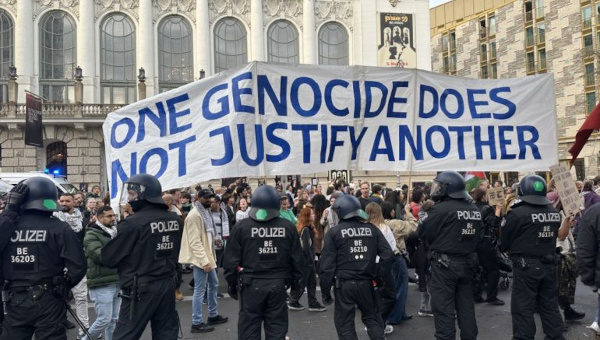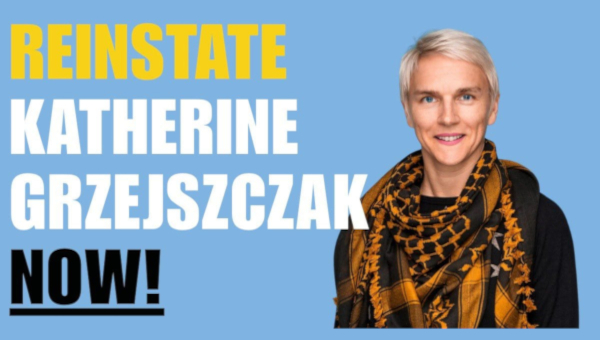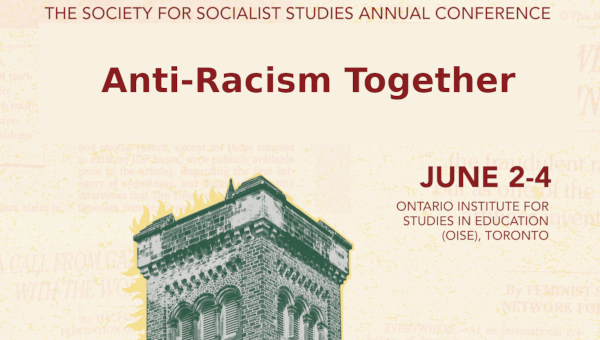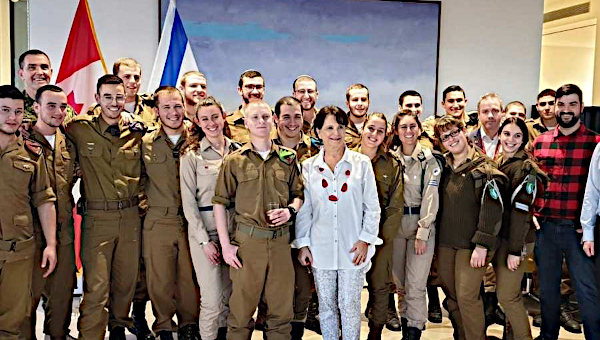The Mass Psychopathy of Shamelessness: From Israel to the UN
Why write about sadism and shamelessness now? Because it’s worse, it’s complex and its causes and effects need to be better understood. Its physical and psychological manifestations are day-to-day, uninhibited, and public: daily extra-judicial police killings like George Floyd in Minneapolis, the police killing of 32-year-old Iyad el-Hallak in Jerusalem, Muslims in India.
Historian J. Huizinga 100 years ago wrote about the waning of the middle ages and poetically characterized “the violent tenor of life” at that time. He found that as things fall apart, salient tendencies become more extreme. Our modern age may be an especially awful waning of all human life, with an emergent “sadistic tenor of life” in many quarters across the world. Despite many laws against torture, cruel and unusual punishment, incitements to violence, and abuse of civilians’ and particularly children’s rights, state-sanctioned violence is now practiced with relish and impunity.
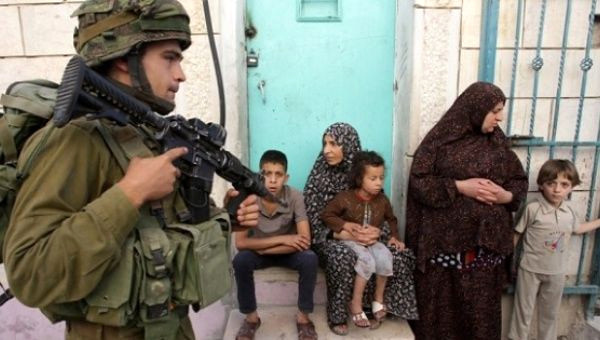
Can “genocide” be applied here descriptively or legally? Has the Holocaust and its usages contributed to reticence about the genocide question in current brutalities? Israel is one of many culpable nations but its practices focus questions about genocide. Michel Warschawski, director of the Alternative Information Center in Jerusalem, wrote: “The whole society is sick, terribly sick.” In addition to the political sleeze of corruption and Israel’s limitless confiscation of land and resources, Israeli Jewish dissenters themselves report gratuitous sadism that is now manifest in many of Israel’s state-sanctioned responses to Palestinians in the time of pandemic and in its world trade in grotesque weaponry. There cannot be legitimate claims of “not knowing” about intentionally inflicted human disasters in well-documented cases like Gaza and Yemen, as there was by Germans about the Holocaust.
Silencing Debate
Just this past May 6th, a public letter by a number of Jewish academics was needed to defend historian and philosopher Achille Mbembe’s comparative use of the Holocaust: Mbembe was scheduled to speak at an academic conference but the German federal antisemitism commissioner banned him from delivering his paper because of his use of “holocaust” analogy. Mbembe compares South African apartheid with Israel and has written pointedly about Israel: “since all they are willing to offer is a fight to the finish, since what they are willing to do is to go all the way – carnage, destruction, incremental extermination – the time has come for global isolation.” In response to the German commissioner, “Some 600 leading Holocaust scholars asserted that banning analogies from the debate about the Holocaust is ‘a radical position that is far removed from mainstream scholarship on the Holocaust and genocide. And it makes learning from the past almost impossible’.”
Even more troubling is the fact that Israel has long attributed genocidal intentions to the Arab world in general, to Iran and to Hamas, and has successfully used these allegations in its foreign policy and military assaults against Gaza. Defending Operation Protective Edge in which Israel killed 550 Gazan children while one Israeli child was killed, Nobel Peace Prize laureate Elie Wiesel wrote that the crisis in Gaza and Israel is a battle between “those who celebrate life and those who champion death… Jews rejected child sacrifice 3,500 years ago. Now it’s Hamas’ turn,” the headline reads. In response, forty Holocaust survivors and 287 of their descendants signed a statement declaring that Israel is genocidal.
The title of this article is an allusion to psychoanalyst Wilhelm Reich’s book about Nazism The Mass Psychology of Fascism. In contrast to Reich, I am not assuming a homogeneous mass. The same behavior has different functions, meanings, and causes for each person, and an individual person’s behavior may change in groups. Also, the appearance of social homogeneity may be due to many factors including punishment for dissent. Nor does the idea of a mass character trait indicate capacity to change individually or societally. What is considered here is the presence of uninhibited, public malicious sadism at the present time. I am also differentiating psychopathy from Reich’s “psychology” to describe a specific pathology in which there is no working conscience, no guilt, and no shame, in which being cruel typically evokes pleasure and pride.
Constructing the Biggest Ghetto
There has long been profound concern and moral indignation about similarities between Israeli and Nazi practices by some Jewish people. At the inception of Israeli statehood, Albert Einstein brought attention to the parallels between future prime minister Menachem Begin’s party and Nazis. His 1948 letter to the New York Times, co-signed by Hannah Arendt among others, was written when Begin came to the United States to gather support from American Zionists. Einstein wrote that Begin’s political party is “closely akin in its organization, methods, political philosophy and social appeal to the Nazi and Fascist parties.” Einstein wrote about the terrorist massacre of the peaceful village of Deir Yassin and how Begin’s party even kept a few villagers alive “to parade as captives through the streets of Jerusalem.”
Quoting from the Olga Document, signed by over 100 prominent Israelis in 2004: “The State of Israel was supposed to tear down the walls of the ghetto; it is now constructing the biggest ghetto in the entire history of the Jews; …it has set up a colonial structure, combining unmistakable elements of apartheid with the arbitrariness of brutal military occupation – in the heart of darkness.” They state that Palestinians are depicted as “sub-human.” This is “seconded and assisted by members of the cultural elite, media barons, vain functionaries and light-scribblers, right and left.”
Yitzhak Laor of Tel Aviv University asked why the “Holocaust Day drew a ridiculous comparison between those of us in the besieged Warsaw Ghetto and those of us surrounding the besieged Jenin refugee camp?” “Gas chambers are not the only way to destroy a nation. It is enough to destroy its social tissue, to starve dozens of villages, to induce high rates of infant mortality.”1
Michel Warschawski describes photos of soldiers “forcing men and women to crawl on their knees, run naked or roll in the mud…” They order “men to the right, women to the left” just like Auschwitz. He cites an article “‘From Tatooed to Tattoer’, reporting that Palestinians were having numbers tattooed on their arms.” A high-ranking Israeli army officer explained that they had to “learn from others’ experiences, including the way the German troops took control of the Warsaw Ghetto.”2
Nurit Peled-Elhanan, professor of education and recipient of Sakharov Prize, whose 13 year old daughter was killed in a suicide attack, testified at the Russell Tribunal on Palestine, said that “The Star of David is equated with rallies all over the world to the swastika… When peace becomes negatively associated with the destruction of Israel and presented as an existential threat.”
Norman Finkelstein describes the “Kristallnacht-like-assault on Islamic houses of worship in Gaza by Israel’s military in 2014.” Israel “… every couple of years launches – with overwhelming popular support and without a hint of remorse – yet another high-tech blitzkrieg against a defenseless, trapped civilian population…”3
Acknowledging Sadism
Sadism is seductively exciting. Noam Chomsky, in a chapter called “Exterminate all the Brutes,” writes of “formidable military might exercised with extreme savagery,” passing from “merely vicious to truly sadistic.”(p. 115) “Since the terms ‘aggression’ and ‘terrorism’ are inadequate, some new term is needed for the sadistic and cowardly torture of people caged with no possibility of escape.”(p. 90) Chomsky quotes former Chief of Staff Rafael Eitan of the Israel Defense Forces and former Prime Minister Yitzhak Shamir: the Palestinians are like “drugged cockroaches scurrying around in a bottle…. [They are] like grasshoppers compared to us” so their heads can be “smashed against the boulders and walls.”4
Journalist Amira Hass describes the “most moral army” after its raid on the offices of the Palestinian Authority’s Ministry of Culture in Ramallah. “In every room of the various departments – literature, film, culture for children and youth, books, discs, pamphlets and documents were piled up, soiled with urine and excrement…. in emptied flowerpots, even in drawers they had pulled out of the desk. Someone even managed to defecate into a photocopier.”
In an interview that took place during the fourth international session of the Russell Tribunal on Palestine (RToP) in New York City, November 6-7, 2012, Nurit Peled-Elhanan analyzes school books published during leftist and right-wing education ministries. “Children are taught that massacres confer dignity and pride on the military. From kindergarten to grade 12, the military is the idol, role model and god of the Israel youth. Jews are depicted as superior and emblematic of universal values whereas a ‘Palestinian life does not count as life.’” Palestinians are described as “cockroaches, non-human vermin, creatures who should be stamped out.” “The mythological heroes are fearless murderers.” Israelis are “prepared to sacrifice their children on the ‘altar of their leaders’ megalomania, greed and bloodthirstiness’.”
Psychological Perspectives
Psychoanalysts working with delinquent adolescents have found that in some cases, parents foster and reward their child’s psychopathy. Avi Mograbi’s documentary Avenge But One of My Two Eyes shows the ways Israeli children from very early childhood through late adolescence are taught by adults in authority that disproportionate aggression is exciting and heroic. They repeatedly hear that “Samson the Hero had a spiritual power. Every punch of his would kill 10,000 people.” In one scene at Masada a group is asked to look at the remains of the cruel “separation wall” and the watchtowers built by the Romans. They are told to empathize with the ancient victims, to listen to their feelings, and to choose what they would do if under siege. They cheerfully said that if they were going to die they might as well kill their enemy at the same time. Not one connects this with the Gaza siege. Mograbi’s film shows the psychopathic process of how Israel intentionally provokes a Palestinian response that is used as a pretext for Israel’s overwhelming Samson reaction. Palestinians carry the guilt and Israel revels in self-righteous power.
Victimhood can lead to empathy, or alternatively, to a sense of being an exception, to entitlement, or at worst to a psychopathic rationalization of exploitation. In newsreels, the people of neighboring Sderot, an Israeli settlement, depicted as terrified victims of a possible Hamas attack, did not seem fearful as they sat on lawn chairs watching the massacre of Gaza.
What is the effect on the children of Gaza who observe first-hand sadism against their parents? The late Dr. El-Sarraj, founder of the Gaza Community Mental Health Programme, writing in 2008, in words that sill fit the military occupation today, “For many of these children the most excruciating ordeal was to see their fathers being beaten by Israeli soldiers – and not offering any resistance. This is truly a terrifying experience… This will have a lasting impact on any observer, but particularly on children. No wonder the Palestinian child will see his model not in his father, but in that soldier; and no wonder his language will be the language of force and his toys and games the toys and games of violence.”
Institutions
The UN preamble is “We the people of the United Nations…” Are the global people taught about the UN, do they have personhood status, and do they have a voice? In videotaped testimonies, Holocaust survivors speak of the crucial ability to see and feel others’ humanness, and at times they even saw soldiers refrain from killing when that human connectedness happened. On May 11, 2020, Palestinian legal, human rights, and medical organizations sent a report to the British Medical Journal “highlighting the lack of any meaningful progress toward accountability in these and other cases even though the UN investigation clearly recognized that Israeli snipers intentionally shot at journalists, health workers, children and persons with disabilities.”
International law expert Richard Falk remarks on the psychopathy built into the UN: “the global legalization of such rogue behavior is embedded in the UN Charter, most openly expressed by vesting a right of veto in the five permanent members of the Security Council, the only organ within the UN system with the authority to reach binding decisions. In effect, the UN Charter rather shockingly acknowledges the uncontrollability of the five political actors, although these are the states that most endanger international peace and security.”
To summarize: physical and psychological sadism is practiced with impunity and even with pride and now plays a deadly part along with other forces in societies. The focus on Israel shows its historical continuity in that society, how it is rationalized in such a way to reflect an ideal and necessary way of protecting society rather than depravity, how it is cultivated and generated in that society from early childhood and evoked in excited and pleasurable experiences of power and sadism, how the genocide is used to claim exceptionalism and to reverse culpability, and how the international regulatory institutions have failed and that collusion with violence is built into the very structure of the UN Security Council. The representation and reversal of vicious practice as virtuous and legalized enactment is not untypical, and examples include Obama’s kill lists to Mao’s cultural revolution, to many current leaders’ (including women) machismo, to the financial institutions imposing killer debt. In the US right now, there are massive outcries of indignation erupting over the police killing of George Floyd. Indignation and moral revulsion about shameless psychopathy trigger these actions. Bus drivers in New York and Minneapolis refuse to transport police to protests and protesters to jails:
“‘As a transit worker and union member I refuse to transport my class and radical youth to jail’, Adam Burch, a 32-year-old bus driver for Metro Transit in Minneapolis and a member of ATU Local 1005, posted on Facebook on Wednesday. ‘An injury to one is an injury to all. The police murdered George Floyd and the protest against it is completely justified and should continue until their demands are met’.” •
Endnotes
- Yitzhak Lior (2002). “After Jenin” in Roane Carey and Jonathan Shainin, eds., The Other Israel: voices of refusal and dissent. New York: The New Press, pp. 118-20.
- Michael Warschawski (2004). Toward an Open Tomb: The crisis of Israeli society. New York: Monthly Review Press.
- Norman Finkelstein (2018). Gaza: An Inquest into its Martyrdom. Oakland: University of California Press.
- Noam Chomsky and Ilan Pappé (2010). Gaza in Crisis: Reflections on Israel’s war against the Palestinians. Chicago: Haymarket. p. 98-99.


